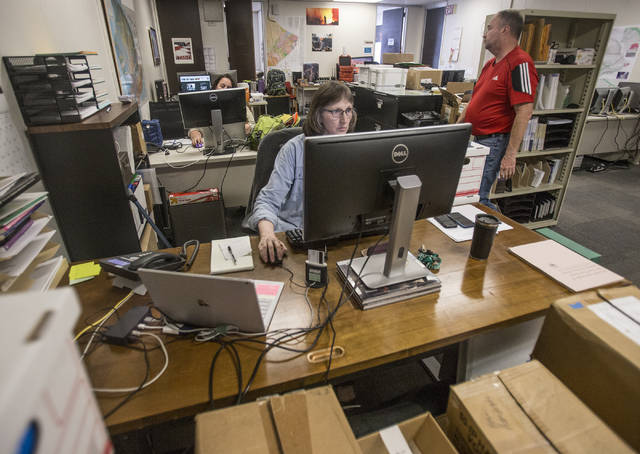HILO — Hawaii County Civil Defense Administrator Talmadge Magno is among those concerned about a potential move of the Hawaiian Volcano Observatory to Oahu.
HVO confirmed last week that Oahu is one option under consideration for a new home since the headquarters inside Hawaii Volcanoes National Park remains badly damaged from last year’s caldera collapses. Other options include a new site within the park or on the University of Hawaii at Hilo campus.
“They know our feelings as far as our needs for them to be on island to help with the planning and mitigation and response with any lava activity,” Magno said Thursday. “We took it seriously.”
U.S. Sen. Mazie Hirono raised her concerns to Interior Secretary nominee David Bernhardt last week.
Magno said federal officials first mentioned the potential move last year as Kilauea’s lower East Rift Zone eruption was nearing its end.
HVO spokeswoman Janet Babb said she couldn’t comment on the likelihood of a move because discussions are ongoing at a higher level in Washington, D.C. The observatory falls under the U.S. Geological Survey, which is part of the U.S. Department of Interior.
Tina Neal, HVO scientist-in-charge, is in the nation’s capitol this week for those discussions. It’s unclear when a decision will be made.
So far, USGS’ communications office at the capitol has not provided additional information.
“We have no update but will let you know if/when we do,” USGS spokesman Paul Laustsen said in an email Wednesday in response to questions from the newspaper, after previously promising more detail.
However, Magno said officials from USGS and DOI discussed a potential move to Oahu as a preferred option because there are existing federal facilities when they met last year. Under such a scenario, at least some of the HVO crew would remain on Hawaii Island.
“The observatory staff … Tina Neal and several people I spoke with, they understand it,” Magno said, regarding his concerns. “They want to be where the volcanoes are.”
HVO consists of about 30 employees, who are working at temporary locations in Hilo after being displaced last year. They are expected to move soon to a new temporary site at the former Hilo Iron Works building.
The observatory monitors four volcanoes on Hawaii Island — Kilauea, Mauna Loa, Maunakea and Hualalai — in addition to Haleakala on Maui. Kilauea, which destroyed more than 700 homes during last year’s eruption, is considered one of the world’s most active volcanoes.
Magno highlighted the importance of having the full staff here in the event of an eruption, based on last year’s experience.
“We wish we could have that access to everybody,” he said.
“It’s just nice having the experts pretty much available all the time (when) we have a need for discussing anything.”
If HVO wasn’t located on island, Magno said he expects its response would take more time to ramp up.
HVO is unique in that it has been located at the Kilauea caldera rim for more than a century. Its existence predates the establishment of the national park.
Not all observatories are located near the volcanoes they monitor.
For instance, the Yellowstone Volcano Observatory operates out of the Cascade Volcano Observatory in Vancouver, Wash.
No matter where they are headquartered, Babb said the HVO staff will remain watchful.
“The monitoring of Hawaii volcanoes will continue,” she said.
Email Tom Callis at tcallis@hawaiitribune-herald.com.






